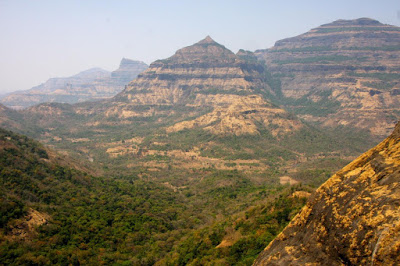
While there is general consensus that a massive asteroid colliding with Earth 66 million years ago contributed to the ensuing mass extinction, including that of dinosaurs, new evidence suggests that this impact triggered more intense volcanic activity, further compounding the extermination.
The new measurements of volcanic activity, which may be the most precise to date, indicate a dramatic increase in the rate of eruption of the Deccan volcanos within 50,000 years of the impact. To gain an understanding of activity at this volcanic range in India, Paul Renne et al. used high-resolution argon dating of local igneous minerals.
This data, combined with the layering of rock, reveals that some subsections of this volcanic region were already active before the asteroid hit. Following the collision, the team notes that the mean eruption frequency of a particular subsection decreased dramatically, but the lava volume (per single eruptive event) increased, causing the mean magma eruption rate to roughly double.
The transition from high-frequency, low-volume eruptions to low-frequency, high-volume eruptions suggests a fundamental change in the magma plumbing system, the authors say. This large volume of magma continued for approximately 500,000 years after the mass extinction, which is similar to the timescale between extinction and the initial recovery of marine ecosystems.
Therefore the authors suggest that the Cretaceous extinction may have resulted from the combined effects of both the asteroid collision and increased volcanic activity.
Reference:
“State shift in Deccan volcanism at the Cretaceous-Paleogene boundary, possibly induced by impact,” by P.R. Renne; C.J. Sprain at Berkeley Geochronology Center in Berkeley, CA; P.R. Renne; C.J. Sprain; M.A. Richards; S. Self at University of California, Berkeley in Berkeley, CA; L. Vanderkluysen at Drexel University in Philadelphia, PA; K. Pande at Indian Institute of Technology Bombay in Mumbai, India. DOI: 10.1126/science.aac7549
Note: The above post is reprinted from materials provided by American Association for the Advancement of Science.









